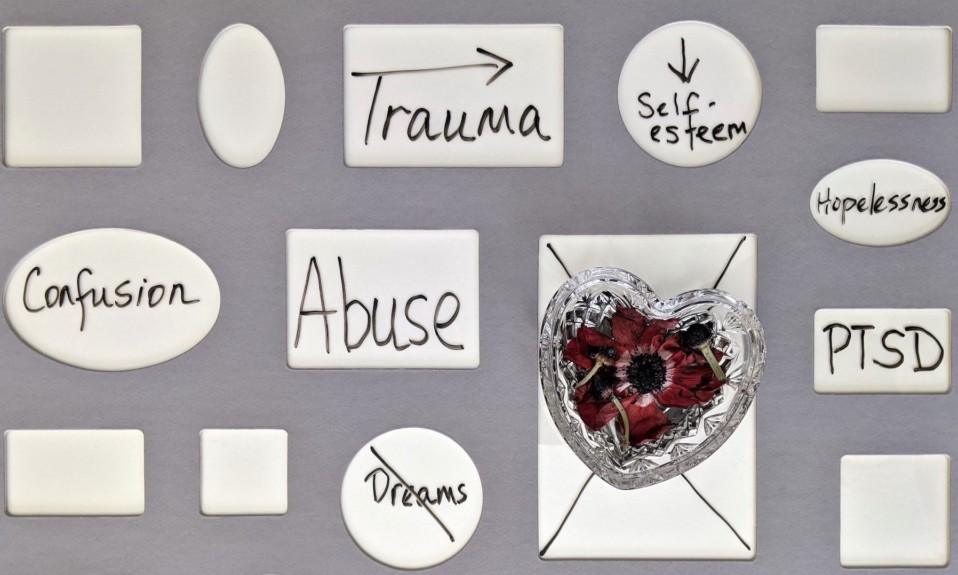When what is offered isn’t always what is wanted
This post is reprinted with permission from one of TreatmentMagazine.com’s go-to blogs about addiction, treatment and recovery: Recovery Review.
By David McCartney
“I never knew that rehab was available to guys like me,” he said to me just before he completed his rehab program. He’d been in and out of treatment for many years before he got to rehab. “Why did nobody tell me?” I was left struggling for an answer.
This is one of the things that still upsets me in my work with patients. It is still happening—even in my area, where there are clearly established pathways to rehab with no funding barriers to navigate.
Across Scotland, patients with alcohol use disorders sometimes tell of multiple detoxes over time and interventions that focus heavily on prescribed medication at the expense of meaningful psychological and social interventions. Some have never been connected to other people in recovery.
I am particularly saddened to hear again and again that rehab has not been discussed or offered. Some of those on medications for opioid substitution treatment talk of their goal of being prescription-drug-free but recount how they have been discouraged or thwarted from moving towards this. Sometimes it is more by luck or initiative by the individual than design that the favored few make it to rehab as illustrated in the recent lived-experience study on rehab in Scotland:
“Another guy that I was selling part of my methadone to said that he was speaking to his addiction worker about getting into rehab. I never actually even knew of rehabs until the guy mentioned it to me. It was just by a fleeting conversation and then I asked that my addiction worker, who was from the community addiction team and it was then that they started speaking to me about rehabs.”
—Barry, 41
Choice
Darren McGarvey, the Scottish broadcaster and writer with the stimulating and emotionally engaging Addictions series, touches on this. A colleague—an addiction specialist—being interviewed by McGarvey expressed concerns about the phrase “parked on methadone.” I found myself nodding—I don’t like it either. It trivializes the valuable support and care that professionals invest in their clients and patients, the relationships that develop and the positive gains individuals make on medication-assisted treatment (MAT).
While there is much to celebrate in addiction treatment delivery, it’s sadly true that not all services provide a high level of care.
My colleague did accept, though, that we needed to do better with the psychosocial interventions that ought to go with medical approaches. While there is much to celebrate in addiction treatment delivery, it’s sadly true that not all services provide a high level of care. This is an area for development. But there is something else often missing, and that is the connection between community treatment services and residential rehabilitation. That conduit is a bit of a rickety rope bridge in places and an abstruse abyss in others, as the recent data on rehab referrals show.
The phrase “parked on methadone” cannot be easily dismissed when it is used by patients—when it is part of the lived-experience narrative. I am thinking of those past patients of mine who were prescribed it for many years who are now in long-term abstinent recovery—those who wish they had been offered a different option earlier. To be clear, I’m not thinking of those who had meaningful interventions, had support with symptoms related to past trauma and who have a good quality of life.
No, I’m thinking of those individuals who once got a “script and a pat on the back,” but who treasure the quality of life they now have—something they wish they had reached for sooner. They didn’t reach because they didn’t know they could. And sadly, some of those who looked after them did not know they could either.
Menus

So, if my experience of those coming to residential treatment is anything to go by, we need to do better with our menu of options. I’ve written about this before. In Scotland we are undergoing a roll-out of the MAT standards. These have worthy aspirations to help to improve access, quality and choice in addiction treatment. However, they do seem to be disconnected from treatments outside of MAT, like rehab.
The standards warn of the “high risk of severe drug-related harm, including death” on exiting residential settings (including rehab), despite little evidence in Scotland that this is the case, or acknowledging that there are ways to mitigate risks. Can the MAT standards really help people make informed choices when residential services are painted in such a dark light? The menu, ostensibly extending choice, seems to remain unnecessarily limiting.
And what of the “high risk of severe … harm”? Let’s face it—a significant number of people whom we admit into residential rehab are already at very high risk of death in any case. It’s one of the reasons they have been referred. Sometimes they get to rehab because all other options have been exhausted—in those cases, it has become the choice of last resort.
Lack of choice is not an issue really if those in our services all want the same things from treatment, and treatment is aligned to those goals. But these things are not lined up. Vital public health imperatives drive us to use evidence-based treatments to reduce harms—including death—but these offerings can be at odds with, or fall short of, what individuals and their families want. This is not about valuing one kind of treatment above another—it’s about having a range of treatments available and, crucially, accessible.
Troubling Mismatches
Again, I’ve written about this before (here), and it’s a theme I keep coming back to, because the problems of mismatch persist. We do not have a joined-up system of care, despite this being a policy priority over many years now.
A study from Berlin found a striking discrepancy between the patients’ desire and staff members’ assessment of the patients’ desire to end opioid maintenance therapy (OMT) in the long term. The large majority of patients reported the aspiration to stop OMT in time, whereas only a minority of staff members believe that their patients might really have such a desire.
When these kinds of findings are reported (there are many studies identifying this theme) a common response is, “Of course patients are going to say that—diabetic patients would like not to have to take insulin, but they must because it keeps them alive.” Methadone is not insulin. People do choose to move on from opioid substitution, and plenty of them achieve it—though of course there are hazards. People need to be able to move rapidly back to MAT if return to use occurs.
Treatment is predicated on what large-scale research says is good for groups of people with opioid use disorder. It therefore sometimes misses out on what’s important or best for the individual.
Treatment is not intrinsically built on that premise of choice though. Treatment is predicated on what large-scale research says is good for groups of people with opioid use disorder. It therefore sometimes misses out on what’s important or best for the individual.
An interesting piece of research from Canada explores this issue. By analyzing existing qualitative research (research that teases out people’s feelings and thoughts—seeking to identify how they experience the world), the authors wanted to find out what individuals receiving medication for opioid use disorder—drugs like methadone and buprenorphine—expected to get from treatment.
They found that patients set some goals that were not considered as “markers of treatment effectiveness”—in other words, goals that were important to them as patients, but not seen as particularly relevant to the clinicians treating them. A mismatch in effect.
Reflections
I think people deserve informed choices in treatment where their goals are clearly identified and then we are honest about how the treatments on offer may align to those goals. For some people, being in medication-assisted treatment will be a good fit, but for others, their goals may be better met in other treatment options. Needs and progress/regress are dynamic, so there is a need for treatment options to have open connections and several alternatives over time.
The saddest thing is when we, as treatment professionals, end up being the barriers that prevent our clients and patients from getting to where they want to go.
There is accumulating evidence that those other options are limited, or frustratingly—despite efforts to change this, effectively not available at all. The saddest thing is when we, as treatment professionals, end up being the barriers that prevent our clients and patients from getting to where they want to go.
In the work I’ve been involved with for the Scottish Government’s Residential Rehabilitation Team, we have found evidence of poor availability of residential treatment options, with many roadblocks in place. Despite the Scottish government shining a spotlight on the issue, setting clear goals and increasing the resources available, some of these barriers are proving very challenging to dismantle—disappointingly, at times, down to people or groups in positions of power, or a failure of prioritization in local health and social care partnerships—resulting in a persistently pernicious postcode lottery.
That needs to change if we are to posit our services as patient-centered, offering a broad menu, trauma-informed, involving a whole family approach and underpinned by shared decision-making. It is important that our treatment offer both reduces harms and aligns to the aspirations of patients and their families, focusing on quality of life as well as quantity of life. While there are some signs of improvement, we still clearly have a distance to go.
This Recovery Review post is by David McCartney, who is an addiction medicine specialist and Clinical Lead at LEAP, a quasi-residential therapeutic community addiction treatment program in Scotland. He trained as a family medicine practitioner and spent much of his career in practice in inner-city Glasgow. Having retrained in addictions, he now works exclusively in the field and until recently was an advisor to the Scottish government on drugs policy. He is a member of the Royal College of General Practitioners. His opinions expressed here don’t necessarily represent the views of his employer. Find more of his writing, as well as a thought-provoking range of articles, insights and expert opinions on treatment and addiction, at RecoveryReview.com.blog.
Top photo: Tasha Lyn; bottom photo: Jessie McCall














